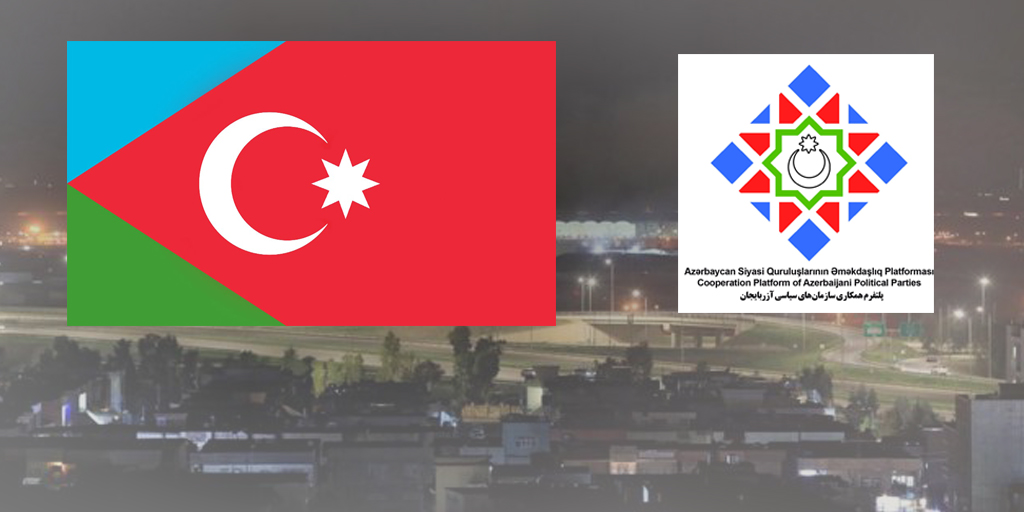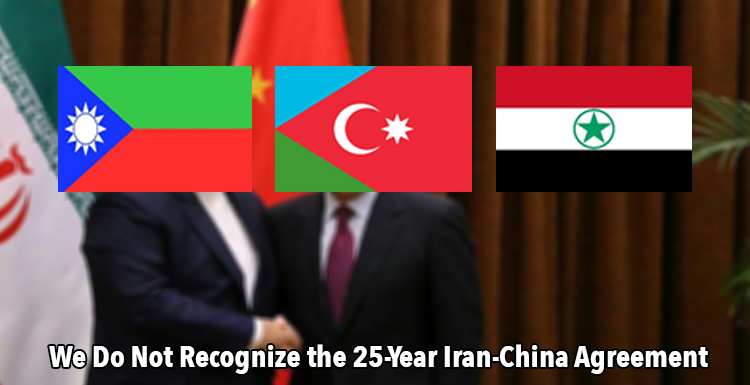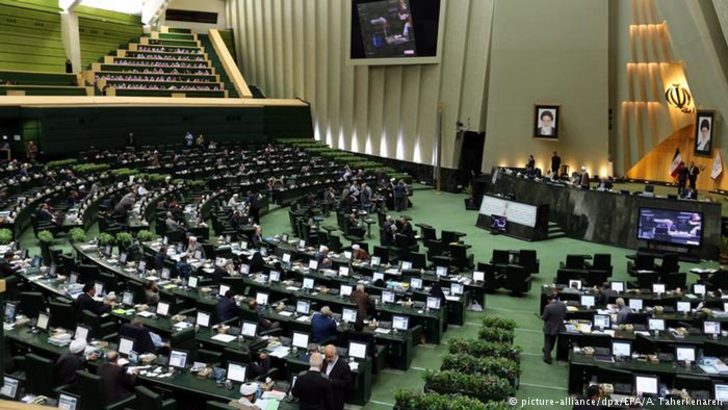Right to Self- Determination & The People of South Azerbaijan

By Huseyin Turkelli*
The basic definition of self-determination is self-government and governing of a political unit by its own people without any compulsion and external interference. The Right of Self –Determination, as a collective right, is a fundamental principle of Human Rights Law which enables a people, to determine its political loyalty and status, to establish the political mandate under which it lives, and to preserve its cultural, ethnic, linguistic, historical or territorial identity and to pursue its social, economic and cultural development free of any external interference
LEGAL AUTHORITY
- The Right of Peoples to Self-Determination is predominantly associated with the decolonization process of 1940s, the Declaration on the Granting of Independence of Colonial Countries and Peoples, and proclamation of the United Nations Charter in 1945.
- The Preamble and Article 1 of the UN Charter, among other things, compels the member states to respect the Right of Peoples to Self-Determination.
- The UN, through the International Covenant on Civil and Political Rights (ICCPR) and the International Covenant on Social, Economic and Cultural Rights (ICSECR) holds that the right of Self-Determination is a precondition to the enjoyment of all other fundamental human rights:
“All peoples have a right to self-determination; by virtue of that right they are free to determine their political status and freely pursue their economic, social and cultural development.”
- Finally, the United Nations World Conference on Human Rights held in Vienna, in 1993, re-acknowledged in its concluding Declaration, adopted unanimously by all states, that the right to Self-Determination is an unchangeable principle of the international human rights:
“All peoples have the right of self-determination. By virtue of that right they freely determine their political status, and freely pursue their economic, social and cultural development Taking into account the particular situation of peoples under colonial or other forms of alien domination of foreign occupation, the World Conference on Human Rights recognizes the right of peoples to take any legitimate action, in accordance with the Charter of the United Nations, to realize their inalienable right to self-determination. The World Conference on Human Rights considers the denial of the right to self-determination as a violation of human rights and underlines the importance of the effective realization of this right.”
LEGAL PRINCIPALS OF JUS COGENS & ERGA OMNES
Right of Self- Determination is JUS COGENS and an overriding principal in international law and must be followed at all times and all circumstances. This right is a peremptory norm from which no derogation is permitted. The Right of Self- Determination is one of elementary rules that concern the safeguarding of peace. Therefore, as aJus cogens norm, the right of Self-Determination operates to invalidate any treaty or agreement between states to the extent of the inconsistency with any of these principles.
The Right of Self-Determination also has achieved the status of ERGA OMNES which means this right is “ flowing to all” and is a mandatory duty of a state owed to the international community as a whole and must be respected at all times and all circumstances. Principally, as the peremptory norm of international law it is argued that the Right to Self Determination also overrides any other principals including the principal of Territorial Integrity of the member states.
RIGHT OF STATES V. RIGHT OF PEOPLES
There have been at least two approaches to interpretation of the Right to Self- Determination:
A) The statist view argues that this principal is right of a state or a government, to decide on its status without any external compulsion. This argument appears unsound since a member state is already an established state it is an axiom that it has already determined its political status. One should wonder what else there could be to decide.
B) The people-ist vision indicates the right of Self- Determination is unalienable entitlement of peoples not of states, and it is reinforced by the sole judicial body of UN in charge of construing and imposing of international law.
The International Court of Justice which operates as the body with jurisdiction to interpret and enforce international law has ruled in case of East Timor as well as in the cases of Western Sahara and Tibet that the right of Self-Determination is the right of the peoples rather than of states and governments.
Paras. 36-37 of the Judgment of International Court of Justice reads as follows:
“ The Court accordingly finds that it is not required to consider Australia’s other objections and that it cannot rule on Portugal’s claims on the merits, whatever the importance of the questions raised by those claims and of the rules of international law which they bring into play….The Court recalls in any event that it has taken note in the Judgment that, for the two Parties, the Territory of East Timor remains a non-self-governing territory and its people has the right to self-determination.”
CASE CONCERNING EAST TIMOR(PORTUGAL v. AUSTRALIA) Judgment of 30 June 1995.
WHO ARE “PEOPLES”
One the most contentious issues in application of Right of Self-Determination is about the definition of “peoples”. Who are peoples, and to whom the right of self-determination may be applied?
The two most significant United Nations studies done by professor Gros Espiel on the Right to Self-Determination set out factors of a people that give rise to possession of Right to Self-Determination:
I. a history of independence or self-rule in an identifiable territory;
II. a distinct culture;
III. and a will and capability to regain self-governance.
PEOPLE OF SOUTH AZERBAIJAN
A DISTINCT PEOPLE AND CULTURE IN AN IDENTIFIABLE TERRITORY
- Southern Azerbaijanis reside in an identifiable territory generally identified as Azerbaijan comprising of the provinces of East Azerbaijan, West Azerbaijan, Provinces of Ardebil and Zenjan, some parts of Hamadan, Province of Ghazvin including Saveh and Karaj, Some parts of Gilan including the port city of Astara.
- Southern Azerbaijan shares borders with the Republic of Azerbaijan, Armenia, Turkey, and Iraq.
- The people of South Azerbaijan speak the Azerbaijani Turkish which is a dialect of the Turkic- Altaic language.
- The South Azerbaijanis are of Caucasian -Turkic origin. The population residing in South Azerbaijan region is roughly about 20 millions. Over 10-15 million Turks reside in the capital Tehran and other provinces. Their Turkic culture is completely different than cultures of Persians (Farsi speakers ) and other peoples in Iran.
A HISTORY OF INDEPENDENCE OR SELF-GOVERNANCE
Mannea Kingdom was the oldest Kingdom established in Azerbaijan. The kingdom’s was situated arouand the Lake Urmia of Azerbaijan. The Kingdom’s capital was Soyuqbulaq, and passibly Hasanli in Sulduz. (As part of the state-run policy of Persianalization and ethnic dilution like most areas these above mentioned cities have been renamed and currently known as Neqadeh and Mahabad.)
Azerbaijan was the center of struggle against Arab invasion. Babak of Azerbaijan had led the fights against Arab Abbasid caliphate.
Azerbaijan was a self-ruled state during the Turkic Seljuk Empire. In 1136 Azerbaijan was a powerful kingdom ruled by Azerbaijani Atabaks followed by another Azerbaijani dynasty of Kharazmshahlar.
During Genghis Han period, Azerbaijan was occupied, however, had never lost its self-governance. Later, Azerbaijan’s capital, Tabriz was designated as the capital of Timurid Empire.
Shirwanshahlar and Agkounlu and Karakoyunlu, were other Azerbaijan dynasties ruled Azerbaijan in 14th and 15th centuries.
The Safavid Empire was established by Azerbaijani Turks in onset of 16th century in Tabriz. The Safavid Empire was succeeded by Avshars and Qajars, the other two Azerbaijani Turkic dynasties.
QAJAR EMPIRE – RUSSIA WARS, DIVISION AND OCCUPATION OF AZERBAIJAN
After more than ten years of war between Protected States of Qajar (iran) Mamalek e Mahruse ye Qajar (in Farsi) and Russian Empire, the two party signed two treaties, the Treaty of Gulustan (1813) and the Treaty of Turkmanchay (1828) and the Self-Ruled State (Mamlakat e Azerbaijan) of Azerbaijan was divided to two parts, North Azerbaijan and South Azerbaijan. North Azerbaijan and its khanates (self-ruled provinces) were annexed to Russia which later regained its independence in 1918. It was re-invaded by Bolsheviks in 1920 and became part of USSR and finally, regained its independence in 1991.
The Southern portion of Azerbaijan had remained as a self-ruling state of Protected States of Qajars with an old-style feudal- federal self-governing system. Not only did South Azerbaijan, as a member state of the Qajar Empire enjoy a full self-governance, it also had a ruling authority over the entire Qajar Empir since S.Azerbaijan was holding the seat of crown prince. However, after Reza khan Pahlavi’s military coup, Azerbaijan was forcibly annexed to newly established Iran. The traditional federal governing system was abolished. South Azerbaijan was stripped of all its self-ruling capacities and treated as a colony. Its language was banned, and it was forced to accept Farsi as the so called official language.
A WILL TO REGAIN SELF-GOVERNANCE
Within last century the people of South Azerbaijan has demonstrated a prevailing will and capability to regain its self-governance. It has made at least three successful attempts to regain its statehood.
1. Azadistan Republic (1920)
There was a government called Azadistan in Tabriz (1920). The Azerbaijani liberal movement was related with this government. Azadistan means “free land” (free as in freedom).
After the collapse of the independent Democratic Republic of Azerbaijan and the consequent Soviet take-over of North Azerbaijan, an autonomous State of Azadistan in South Azerbaijan was established by the people of South Azerbaijan. It was commanded by Sheikh Mohammad Khiyabani of the Democratic Party of Azerbaijan and lasted over six months. The democratic self- rule of South Azerbaijan was oppressed and South Azerbaijan was annexed to Iran in September 1920. Thousands were massacred including Mr. Khiyabani the leader of the Azadistan government.
2. Azerbaijan National Government (1945)
The Firqe-i Demukrat, or Azerbaijan Democratic Party (ADP), publicly announced its formation in Tabriz on September 3, 1945 by a group of activists headed by Jafar Pishevari. ADP expanded throughout Southern Azerbaijan. During the first week of September 1945, millions of Azerbaijanis joined the Democratic Party of Azerbaijan. Later in September 1945, at its first congress, the Azerbaijani Democratic Party authorized the formation of a Liberation Army called Azerbaijan’s Fedaies.
This Liberation Army of Azerbaijan commenced the liberation measures on November 18, 1945 and by December 1945 the Fedaies were able to liberated all remaining government posts in South Azerbaijan. Consequently, South Azerbaijan was liberated became an independent and democratic republic. Elections were held, and for the first time, a freely elected legislature was established.
The new state was supported by the people of Socialist Republic of Azerbaijan (North Azerbaijan) and USSR. However, the US and Westerns Alliance were supporting Iran and providing their marionette, Mohammadrza Pahlavi with increasing economic and direct military assistance.
Despite the fact that the Azerbaijani and the Iranian governments had signed a treaty in which the central government pledged recognition of the autonomous South Azerbaijan, the Iranian Army violated the treaty and forcefully re-annexed South Azerbaijan to Iran in December 1946. In the course of the military invasion, more than 50 thousand Azerbaijanis including thousands of elders, women and children were massacred by Iranian Army. Thousands were arrested and condemned to either death, or life in prison and exile. Thousands were indefinitely exiled to central deserts of Iran. Over 50 thousands political activist departed to a self-imposed exile to North Azerbaijan. Azerbaijani students were forced to denounce their culture and mother language. The Iranian Army celebrated the invasion of Azerbaijan by public executions of democrats and burning the Azerbaijani Turkic textbooks.
3. The Azerbaijan Muslim People Party (1979)
For the third time in last century Azerbaijanis made another attempt to liberate themselves from enormous state-run racial discrimination. In 1979 Azerbaijanis under the leadership of Muslim People Party of Azerbaijan and under secularist religious leader Ayatollah Sherietmedari succeeded to establish a semi-autonomous rule in Tabriz, the capital of Azerbaijan. The central Radio-TV station was liberated by the people and after many years the people of south Azerbaijan enjoyed TV and Radio programmings in their mother language which was band since dissolution of Azerbaijan National Government in 1946. Azerbaijanis were able to establish a semi-autonomous rule for a few months. Once again the Iranian Army under the leadership of Khomeini started a massive military intervention using heavy artillery and invaded Tabriz and other regions of South Azerbaijan. Ever since Southern Azerbaijan’s Right to Self-Determination and its other basic rights and freedoms are infringed.
CONCLUSION
In accordance with the Declaration on the Granting of Independence of Colonial Countries and Peoples; the Preamble and Article 1 of the UN Charter; the International Covenant on Civil and Political Rights (1976); and the Declaration of the World Conference on Human Rights (1993);
the People of South Azerbaijan holds a collective right to determine its political status, to establish the political mandate under which it lives, and to preserve its cultural, ethnic, linguistic, historical or territorial identity and to pursue its social, economic and cultural development free of any external interference.
The Right of Self- Determination in accordance with the legal principal of JUS COGENS is a peremptory norm and operates to invalidate any treaty or agreement between states to the extent of the inconsistency with this principle.
The Right of Self-Determination has achieved the status of ERGA OMNES and is a mandatory duty of a state owed to the international community as a whole and must be respected at all times and all circumstances.
Despite the abortive attempts of the statist vision, the International Court of Justice has ruled in the cases concerning East Timor and Western Sahara that the Right to Self-Determination is the right of people not of states.
The people of South Azerbaijan is a distinct people, it has distinct culture, distinct language and a distinct identity.
It has long history of statehood, and self-governance. South Azerbaijan has never decided with a free will to join Iran .
South Azerbaijan has never consented to its annexation and in fact, its wish has never been consulted. South Azerbaijan has been annexed to Iran through imperial aggression and application of excessive military force.
South Azerbaijan has demonstrated will and ability to realize its Right to Self- Determination. South Azerbaijan had established democratic self-governance in 1920, 1945 and 1979. The people of South Azerbaijan enjoyed an inordinate political, social, cultural and economic development and preserved its cultural, linguistic, ethnic and territorial identity while self-governed.
Most particularly, in 1945 people of South Azerbaijan enjoyed a complete egalitarian, representative democracy and conducted comprehensive social, economic, cultural and political reforms. However, South Azerbaijan was dragged back to an absolute dictatorship, agony and misery suffered by Azerbaijanis up until now through brutal military invasions of 1920, 1946 and 1980.
It is, therefore, concluded that, the people of South Azerbaijan has demonstrated a resilient will to exercise and realize its right to Self Determination. In a free referendum, if held today, the vast majority of people of South Azerbaijan would vote for a Self- Governed South Azerbaijan which is the paramount remedy available under international law.
The government of Iran must reach a resolution to hold a just and free plebiscite administered and overseen by the UN for the purpose of determination of allegiance and political status of the people of South Azerbaijan.
PROPOSITIONS
In view of the aforementioned facts and reasons, it is proposed that;
A) The international community recognizes that likewise East Timor, Western Sahara and Tibet, SOUTH AZERBAIJAN remains a Non-Self- Governing Territory and its people has the Right to Self-Determination.
B) The issue of South Azerbaijan is referred to the Committee 24, the Special Committee on the Situation with Regard to the Implementation of the Declaration on the Granting of Independence to Colonial Countries and Peoples or any other committee deemed appropriate for further investigations and examinations.
* Huseyn Turkelli is an international human rights advocate from Southern Azerbaijan. He is a Member of the Law Society of Upper Canada, the managing advocate at Turan Legal Services and the head of Advocacy Center for South Azerbaijanis (ACSA). He also teaches some law courses at Toronto’s Lambton ; Cestar College.



























